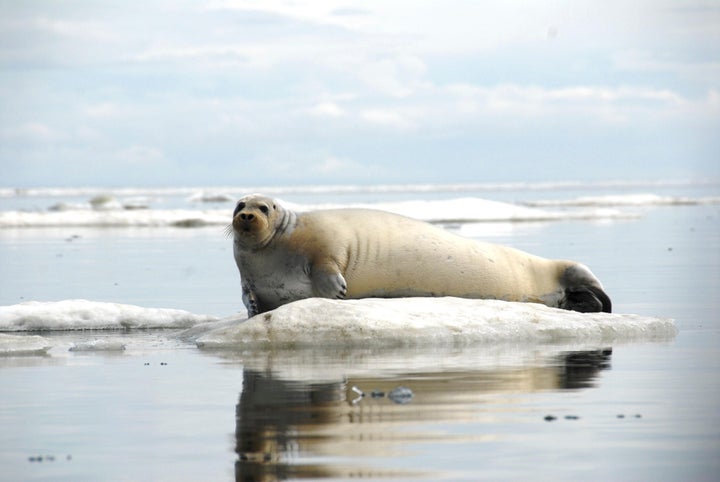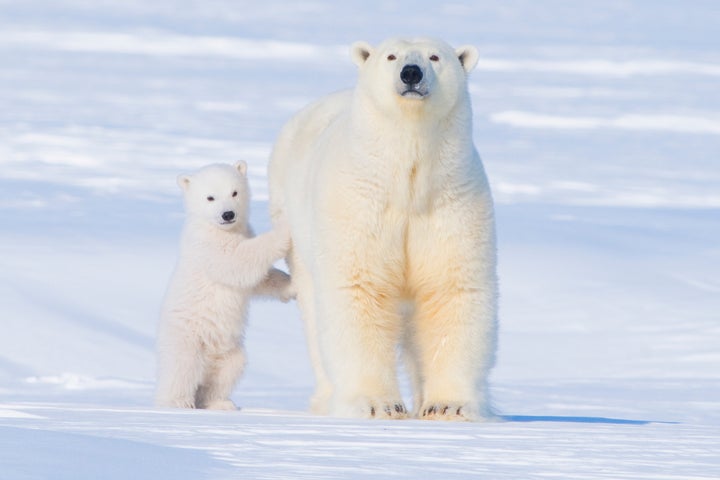A federal appeals court ruling Monday will likely prove key to protecting species in the face of global climate change.
The 9th U.S. Circuit Court of Appeals in San Francisco sided with the National Marine Fisheries Service in its decision to list an Alaska population of bearded seals as “threatened.” The court based its ruling on forecast models that show climate change will drive melting ice and habitat loss, the Los Angeles Times reports.
The federal agency’s listing of the animal under the Endangered Species Act faced an appeal from Alaska Oil and Gas Association, the American Petroleum Institute, the state of Alaska and indigenous Alaskans.
“The Service need not wait until a species’ habitat is destroyed to determine that habitat loss may facilitate extinction,” Judge Richard A. Paez wrote in the lengthy decision.
Paez added that the National Marine Fisheries Service “adopted the position of the overwhelming majority of the world’s climate scientists” and “did not misinterpret or misapply the word ‘likely’ when it concluded that the bearded seal was ‘likely to become an endangered species within the foreseeable future.’”
No doubt a win for the seals, Monday’s court ruling also sets an important precedent for protecting other species under threat from a changing planet.

Bearded seals, one of four arctic seal species that inhabit Alaskan waters, rely on sea ice for feeding, resting and pupping, according to the Alaska Department of Fish and Game. In a 2012 release announcing the listing, the National Oceanic and Atmospheric Administration said it conducted a “comprehensive review” of climate models developed by the Intergovernmental Panel on Climate Change. It concluded that “sea ice and snow cover are likely to further decrease in the foreseeable future resulting in population declines that threaten the survival” of Alaska’s ringed and bearded seal populations.
Kristen Monsell, an attorney for the Center for Biological Diversity, an environmental group that petitioned to list the seals in 2008, called Monday’s ruling a “huge victory.”
“This decision will give bearded seals a fighting chance while we work to reduce the greenhouse gas emissions melting their sea-ice habitat and keep dirty fossil fuels in the ground,” Monsell said in a statement.
The Center noted in its release that the species’ winter sea-ice habitat is projected to decline at least 40 percent by 2050. Additionally, it said proposed offshore drilling would threaten the seal population.
Alaska Oil and Gas Association president Kara Moriarty was among those who condemned Monday’s ruling.
“Their rationale for listing the bearded seal was based on conjecture, rather than science,” she told Alaska Dispatch News. “We, along with the other plaintiffs are currently considering our options moving forward.”
Brad Meyen, senior assistant attorney general for Alaska, told the L.A. Times the state may appeal the ruling.
“If this opinion stands, the National Marine Fisheries Service would list a species that is abundant and in good health based on the claim that climate change will impact habitat over the next 100 years and may cause harm,” he told the publication.

Numerous species are already feeling the impacts of climate change. In 2008, polar bears became the first animal listed under the Endangered Species Act because of forecasted impacts of climate change. In March, the 9th Circuit Court of Appeals upheld U.S Fish And Wildlife Service’s designation of an 187,000-square-mile polar bear habitat in Alaska’s marine waters and its northern coast.
Peter Gleick, co-founder of the Pacific Institute, told The Sacramento Bee he expects the opinion on bearded seals will have “profound” implications for the entire nation.
“This court ruling recognizes that climate change is a real threat, that climate science and models are scientifically sound, and that the Endangered Species Act requires we use information on future risks to protect species today, rather than waiting for the downward spiral of extinction to begin,” he told the publication.

